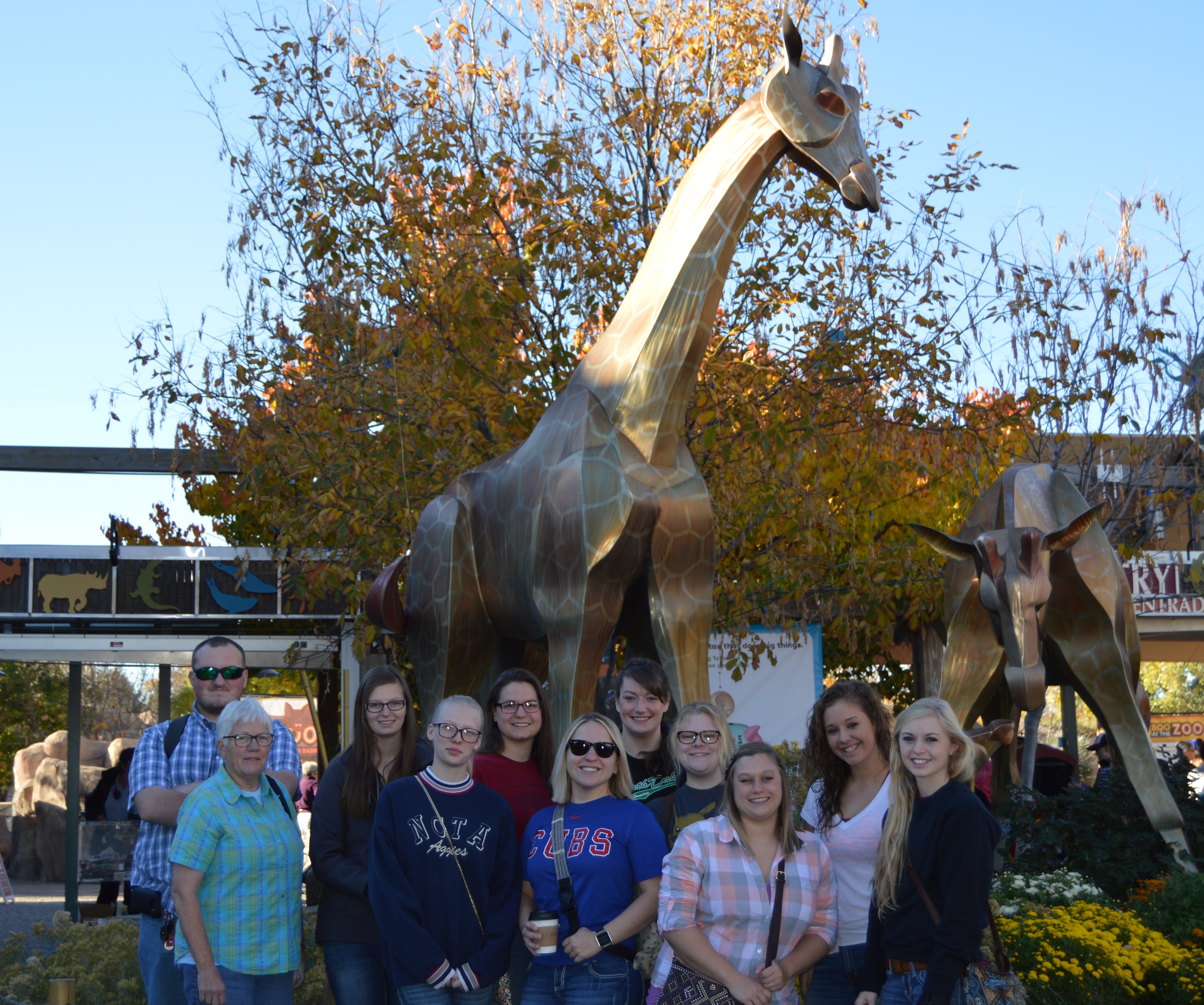Wildlife, zoo on veterinary tech tour

Nov. 1, 2016
By NCTA News Service
Curtis, Neb. – Wildlife, exotics and zoo animals in Colorado have piqued interest of Nebraska students eyeing future careers in animal health.
Ten veterinary technician students from the Nebraska College of Technical Agriculture at Curtis recently explored the Denver Zoo, Denver Museum of Nature and Science, and the Wild Animal Sanctuary at Keenesburg, Colo., for a study group sponsored by the NCTA Safari Club.
“This was a really cool educational experience for me, and a very unique opportunity for our Vet Tech group,” said Brenden Bose, a second-year vet tech student from Orleans, Neb.
“I’ve traveled with my family out of state, but not had the experience to see the types of animals and exhibits that we saw at the zoo and wild animal sanctuary,” said Bose who is president of the 2016-2017 Safari Club.
The NCTA club offers students a chance to learn more about non-domestic species or exotic animals such as those found in wildlife centers, aquariums, zoos and parks.
Safari Club Study Tours
In May, 2016, a study group visited Ecuador and the Galapagos Islands, and in 2015 a group went to Costa Rica. The new Safari group is making plans now for their next learning opportunity, said Judy Bowmaster-Cole, associate professor of veterinary technology.
“The current group is exploring the possibility of a visit to Costa Rica and Cuba,” she added. “Safari class is student driven, so they will plan the trip and the learning outcomes. It will be interesting to see where in the world we go next!”
Bowmaster-Cole and NCTA’s Veterinary Technology division chairman Barb Berg, LVT, were faculty sponsors for the educational tour to Denver and Keenesburg, located nearly 4 hours from the Curtis campus.
Bose said several students were able to interact or assist at the Denver Zoo visit. “Some in our group got to feed elephants and then watched zookeepers feeding the penguins.”
He enjoyed viewing a film at the museum’s IMAX theatre, in addition to learning about future career opportunities after graduation next May.
Wild Animal Sanctuary
Seeing wild and rescued bears, wolves, emus, ostriches, tigers and much more from board skywalks above the open-spaced Wild Animal Sanctuary at Keenesburg was the highlight for Haley Pollack, a second-year student from Seward, Neb.
“I had no idea this facility existed with so much open space for the 350 different species of animals,” Pollack said. “It was a real eye-opener, seeing a completely different perspective of wild animals than how we observe them at a zoo.”
Several of the NCTA students are interested in working with exotic animals or wild life in a sanctuary or zoo atmosphere, Pollack said, including herself. “I am hoping to work with exotics such as snakes and lizards.”
With binoculars, the students could see the animals close up. “Two or three prides of lions roamed about directly below where we were on the skywalks, and that was incredible,” Pollack added.
Many of the animals had been rescued from severe confinement or harsh health conditions, she said. “Volunteers, assistants, and interns help a fulltime veterinarian who is on staff to get them back into better conditions,” Pollack described. Three of the students are interested in applying for internships there.
Another highlight was learning about the rescues and unique residents. The television program Animal Planet had featured “Eddie,” a black leopard who lives at the Wild Animal Sanctuary. “So we got to see a celebrity of sorts, on the tour.”
Skilled Veterinary Technicians
Students studying for their associate degree in veterinary technology will complete their second year, and take their exit exam from NCTA next spring. Once graduated, they will have opportunity to take the national exam to become licensed veterinarian technicians.
Upon passage and licensure, LVT’s can work beside veterinarians in private practices, or seek positions in other animal health care settings where these nurses of the animal world perform procedures such as administering anesthesia, taking radiology exams and giving vaccinations and other health maintenance procedures.
There is also career demand for graduates as veterinary assistants with pets, day care, boarding and grooming facilities and livestock production. NCTA’s veterinary technician program started in 1967 and is one of the longest-running accredited programs in the United States.
Bose said he interested in being a dog handler with a military branch such as the National Guard or a veterinary technician with a canine unit. The college’s next graduating class will surpass 900 NCTA graduates in the veterinary technician ranks.
Additional information about NCTA’s animal health programs, the Safari Club or the Stock Dog Club is available from professors Berg or Bowmaster-Cole at ncta.unl.edu or 1-800-3-CURTIS.
Download a PDF of this press release